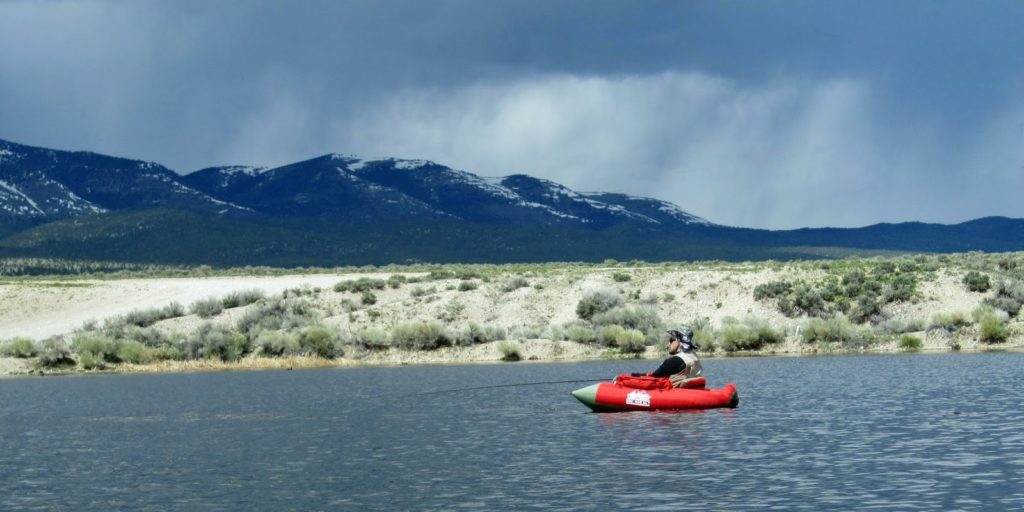
My son Nick got me started on this blogging journey in June 2007. He created the blog from Adobe PDF files I emailed to family and a couple fishing buddies. The original PDF essays were almost completely about my fishing experience at select destinations with pretty pictures. The blog was created as a Father’s Day gift, and Nick aptly named it FisherDad by securing the website URL www.fisherdad.com. To make up for lost time, I started posting blogs recreated from fishing, climbing, and skiing adventures reaching way back to the late 1970s.
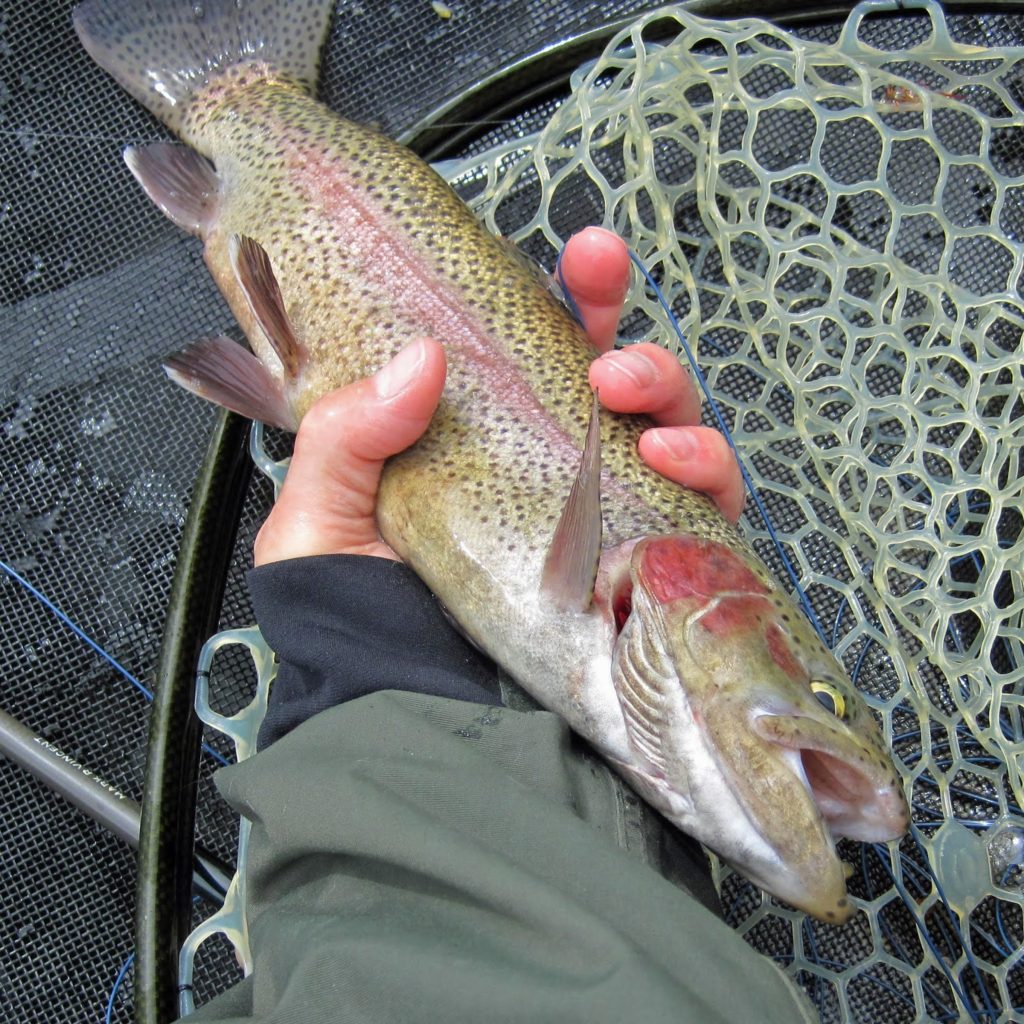
I actually inaugurated my fly angling hobby on Cold Creek in the late 1970s, but as my angling skills improved I abandoned tiny Cold Creek for larger streams like Beaver Dam, Santa Clara, and Mammoth as well as stillwaters such as Pine Valley, Cave Lake, Comins, and Illipah. Then, in the early 2000s, I watched an Outdoor Nevada episode on a local PBS station about a small pond that was created as a resource to fight wildfires threatening private property in the Cold Creek development (yes, that private property through which the fishable section of the creek now resides). The show’s host, Brian Wignall at that time, was fishing the pond with a Nevada Department of Wildlife officer. Neither caught a trout… but that didn’t matter. I decided that the little pond of less than one acre could become my local, winter-season fishing hole. For about five years I hardly ever encountered another angler fishing the pond. I posted my first Cold Creek blog, back dated to 2006, documenting my trespass of the private property and discovery that trout were still reproducing in the Cold Creek headwaters. That post, and those that followed about the Cold Creek pond, seemed to help popularized it, which I foolishly fueled by including maps and directions in my blog (the popularity would have happened anyway).
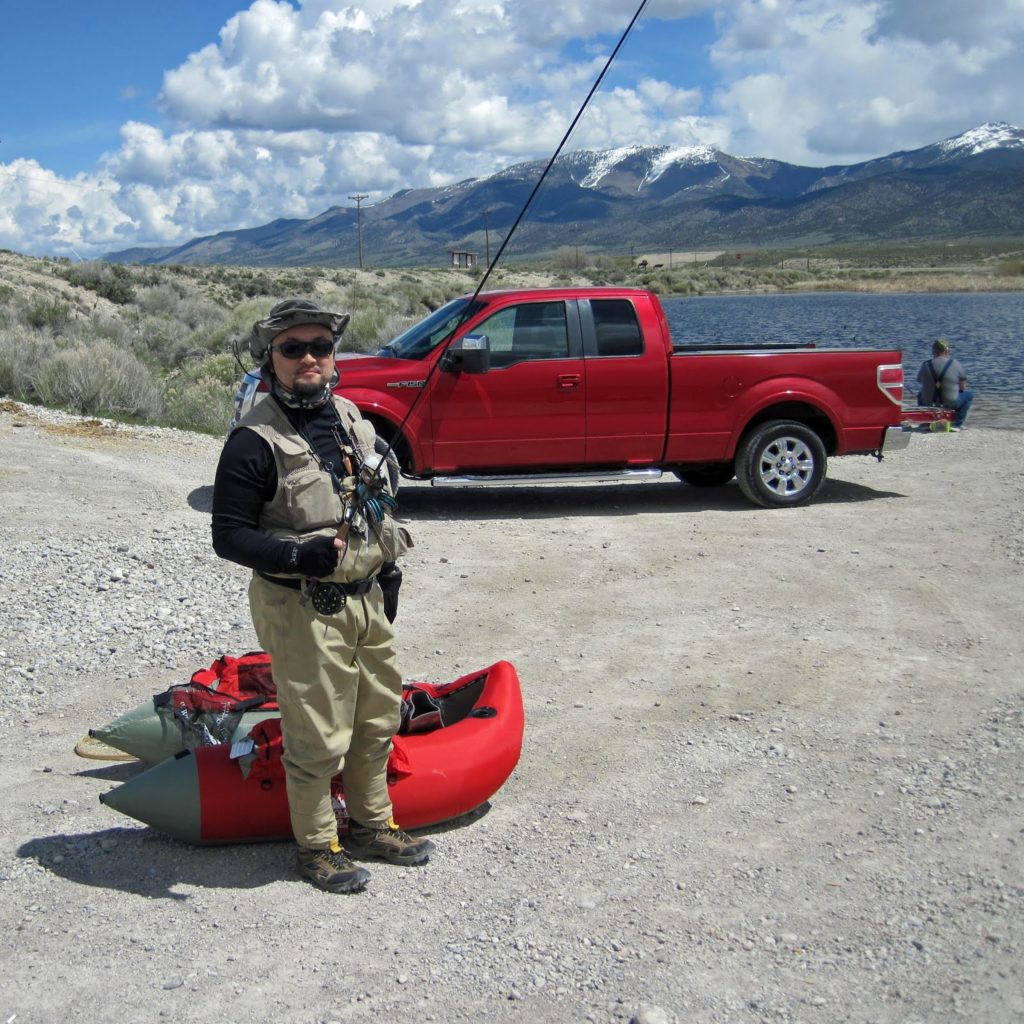
I’m reminiscing about those blog beginnings because one of the my early followers was Chan, and one of his very first blog comments was on the 2006 Cold Creek blog. Over the years he’s posted numerous comments, and I knew he was falling heavy into the sport of fly angling. He asked many questions, seeking to understand the craft as well as discover new streams, or what backcountry types call “blue lines on a map.” I don’t hold myself in high regard as fly fishing goes; it’s just that I’ve been doing it so long it seems to become second nature. I try to keep things simple and not overthink techniques and situations. I’m sure there are things that I am unaware of doing when I fish, and those are the most difficult to teach others. They are the types of things you learn by observing someone who is successful.
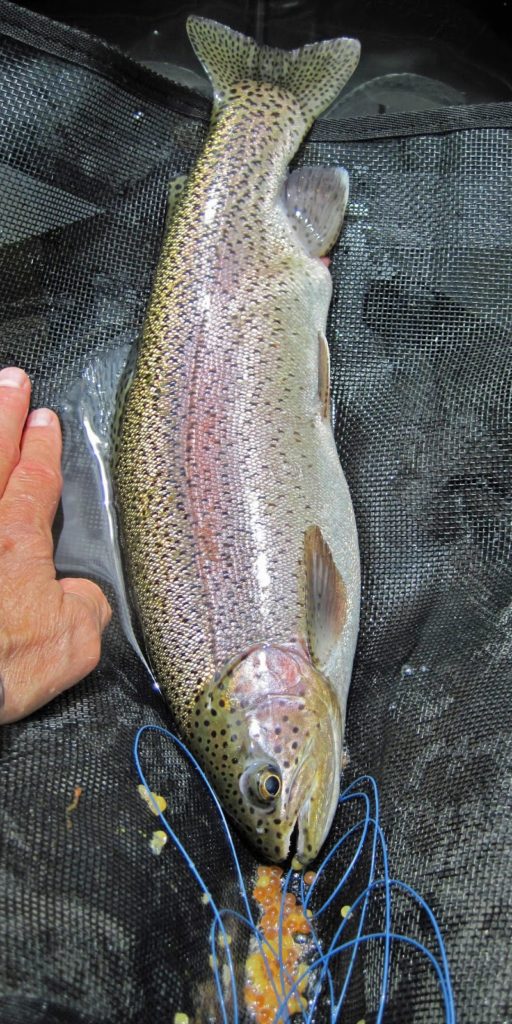
Chan had a fishing buddy in Las Vegas, and they seemed to focus on Utah waters where they had very good success. A year or so ago his buddy moved to Carson City, which was a great move for him as the east slope of the Sierra Nevada Mountains has many wonderful “blue lines.” For Chan, not so much because he lost a local angling partner (of course he’ll find excuses to visit Carson City as often as he can). Last October Chan posted a comment about missing his fishing partner and how that was impacting his outings. Although I really didn’t know a lot about Chan, we’ve had a “social media” relationship for over 8 years. Through the blog I learned he was married with young children, started his public service career as an auditor for the State of Nevada where he now serves as a hearings officer while running a small law practice on the side. Those facts were interesting, but it was his deep, sincere affection for fly angling that poured out of his blog comments that revealed his character to me; I’ve never heard of a fly fishing serial killer, although there might well be one or two. Regardless of the risks, Chan and I decided to take a trip to White Pine County together. He wanted to learn more about stillwater fly fishing, and I saw a potential local fishing partner who enjoys it as much as I do.
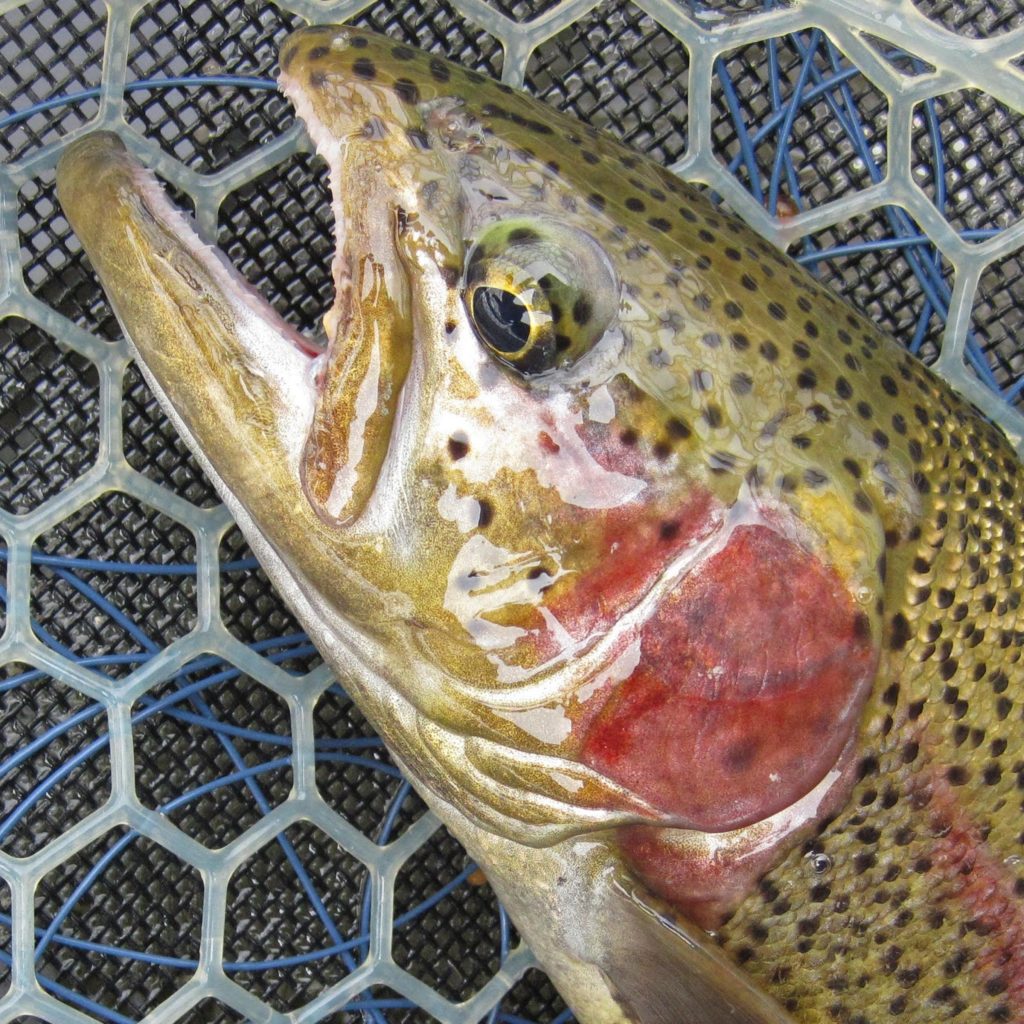
Chan wanted to learn more about fishing lakes and reservoirs. I knew he had fished the Wayne Kirch reservoirs with some self-described mixed results, and I suspected there were other stillwaters as well. However, he’d never been to Ely, NV or fished the surrounding White Pine Co. reservoirs, so we decided that was to be our destination. The soft plan was to leave early Thursday and try Comins Reservoir until the sun set. Friday we’d drive US Highway 50 over to Illipah Reservoir and give it a go. I knew Comins would fish better than Illipah, but sometimes Illipah can surprise you. I was hoping we’d find numerous Illipah trout in the range of 13 to 15 inches, but my real desire was for Chan to land one or two strong Tasmanian rainbows of 20 inches or better from Comins. We didn’t accomplish either of those goals, but that’s not to say the trip was disappointing.
The weather forecast was a little worrisome 10-days out. Rain and possible thunder was originally predicted for both days. As the trip came closer the storm pattern seemed to be weakening and/or sliding a little south of Ely. Thursday was the tougher of the two days, although upon arrival there was a broad patch of sunlight that highlighted Comins and seemed to make it feel unusually warm. That didn’t last. After an hour or so the clouds converged and blotted out the sun. Luckily we only received a light shower and heard distant thunder but saw no lightening. The wind, on the other hand, often gusted well beyond 15 mph for short periods. By the end of the evening we were both pretty tired from the kick-paddling. Friday started out sunny with a slight wind. After breakfast we headed for Illipah which lies between Ely and Eureka on US 50. The Illipah road was muddy as expected, and in the early morning it was deceivingly slick, but the Tacoma’s four wheel drive got us in and out without much difficulty. I will say, when an Ely local claims you can drive a passenger car in and out of Illipah Reservoir, what he’s omitting is the phrase “if the road hasn’t received snow or rain for three days or so.” Two-by-four pickup trucks have needed a tow assist to get out of situations even in warm, clear conditions due to the gumbo-like clay’s water retention. I know this because I was the stuck truck on one occasion.
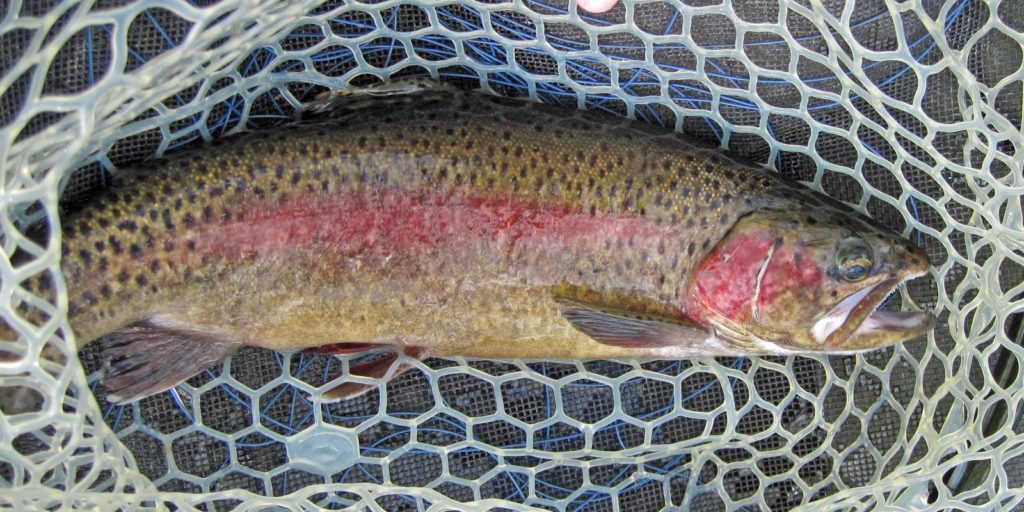
One of the delightful surprises on this trip was how much Chan and I are alike. Besides our conservative accounting and fiscal backgrounds as well as public service careers, our sense of responsibility and work ethic, both with respect to family and career, are very similar. We seem to share a sense of fairness and appreciation for life’s special offerings like families and nature. We’re both easy going, able to take things in stride, and we appreciate every moment we are given to pursue trout in the wonderful waters they inhabit. Given a choice and our health cooperating, we’d both prefer stalking trout in cold water mountain streams. There’s something chess-like about reading stream water for feeding trout and then accurately throwing a fly, especially a dry fly, into their feeding zone and waiting upon their exhilarating strike. In some ways it can be addicting this sport of fly angling.
We caught our share of trout both days, but nothing over 19 inches. We fished long hours, and except for a number of Comins shore anglers we pretty much had our way on both reservoirs. Although we caught lots of trout on Illipah, they were all nondescript planted rainbows of 10 to 11 inches, some smaller. I was pleased to land a wild brown trout in the shallows of the shoreline on a size 14 olive bead head nymph, but even that was only 11 inches or so. Illipah is about 6,800 feet in elevation, and it seemed to me we might have caught it too early after ice out, but to be honest I did see two guys filleting a nice rainbow of at least 15 inches for a noon fish-fry right on the shore. Maybe we didn’t give Illipah our best, maybe we should have attacked the inlet more earnestly.
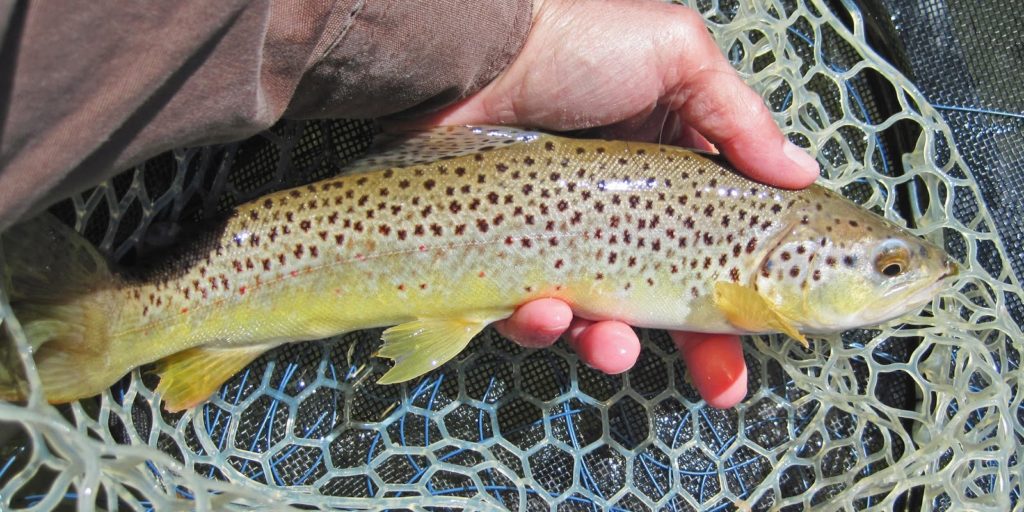
We lost many fish in Comins, but a few 19-inchers did come to net. I lost one near the bulrush on the reservoir’s north end. I thought I hooked it well, but the brute stayed down and proceeded to make strong, vigorous head shakes of the type that signal trouble. He did indeed manage to get that hook out of his mouth, and looking back I wonder if I kept the 4x tippet too tight. Fortunately, that disappointment was vanquished by a gorgeous 18-inch brown trout I landed in the shallows near the boat launch area. It was my last trout of Thursday evening, and it was the first brown trout I ever caught at Comins. Initially it leapt twice, clearing the water by one-to-two feet just like a rainbow, but its buttery color betrayed its behavior. It fought extremely hard and didn’t come to net very quick so I rushed to release it before it exhausted itself beyond recovery. Consequently I didn’t get the photos I wanted… but I do have Chan as my witness, although his Carson City buddy claims Chan has “fisherman’s eyes.”
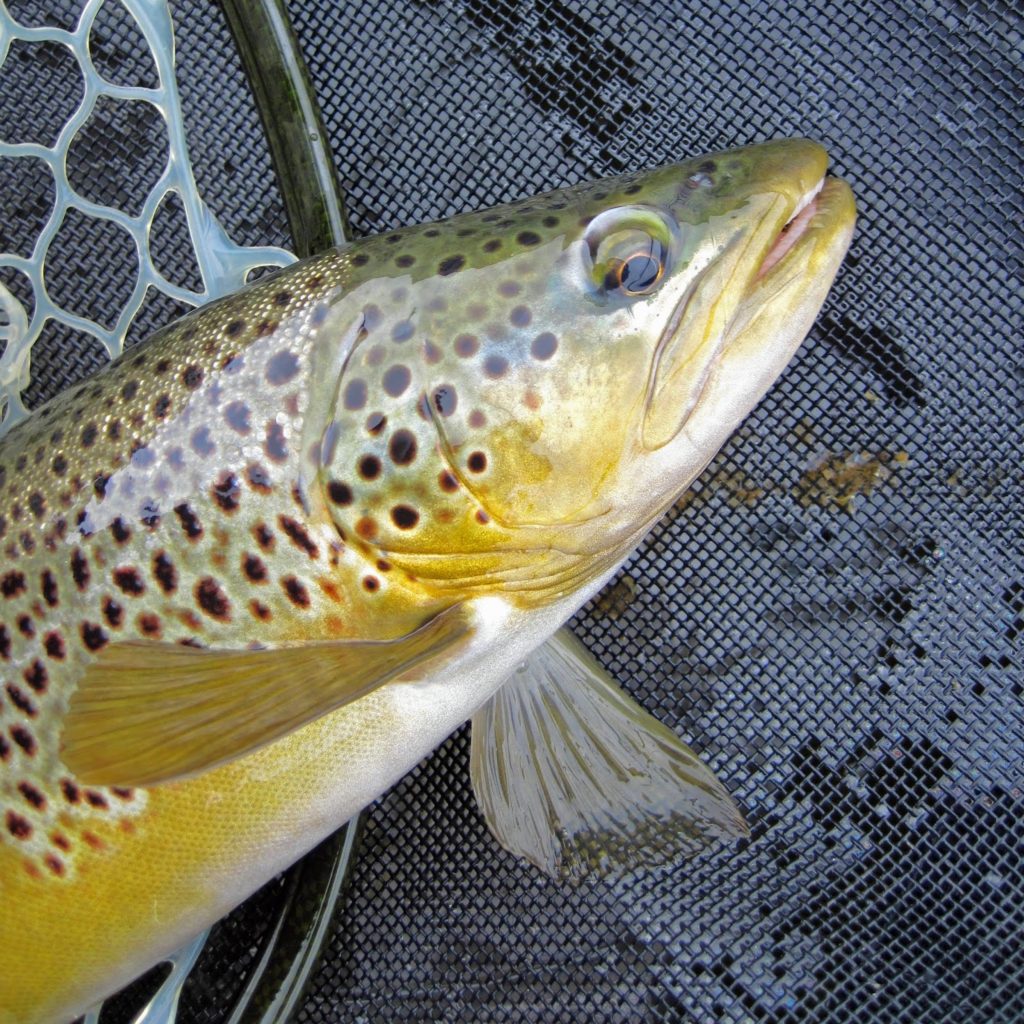
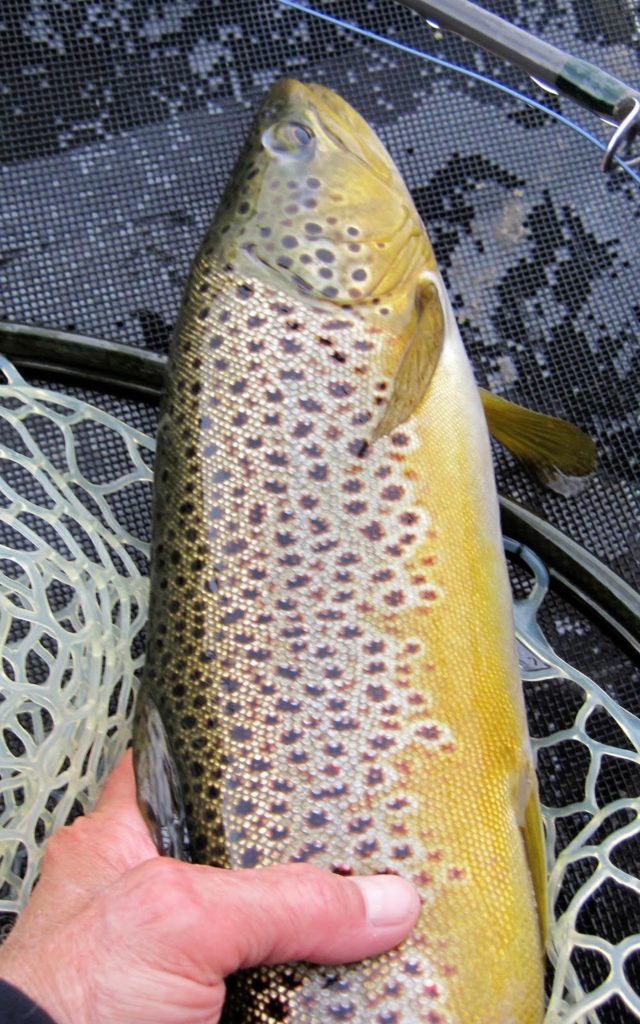
We talked to quite a few folks along the way; some shared photos on their phones and the stories that went along with them. One told us of large 26 to 30 inch pike being caught in Comins, which means the trout fishery will eventually collapse again. If you’ve never experienced Comins, you better try it within the next few years.
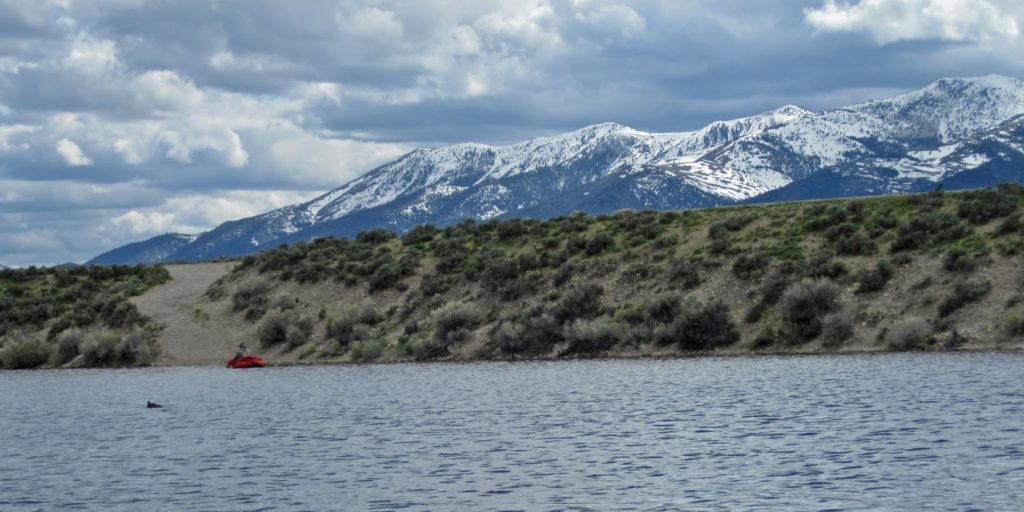
Another man, an airplane mechanic who was on call for the Ely air-ambulance providers, showed us photos of huge Wild Horse Reservoir trout of 24 inches, a legitimate 24 inches. He caught them on the southern end where the Owyhee River enters the reservoir. Since I’m planning a July adventure in northern Elko County, I was very happy to hear his stories, making note of where he found early spring success. I also thanked him for doing a great job servicing the planes, because I rode one of those air-ambulances from Ely to Las Vegas back in October 2015.
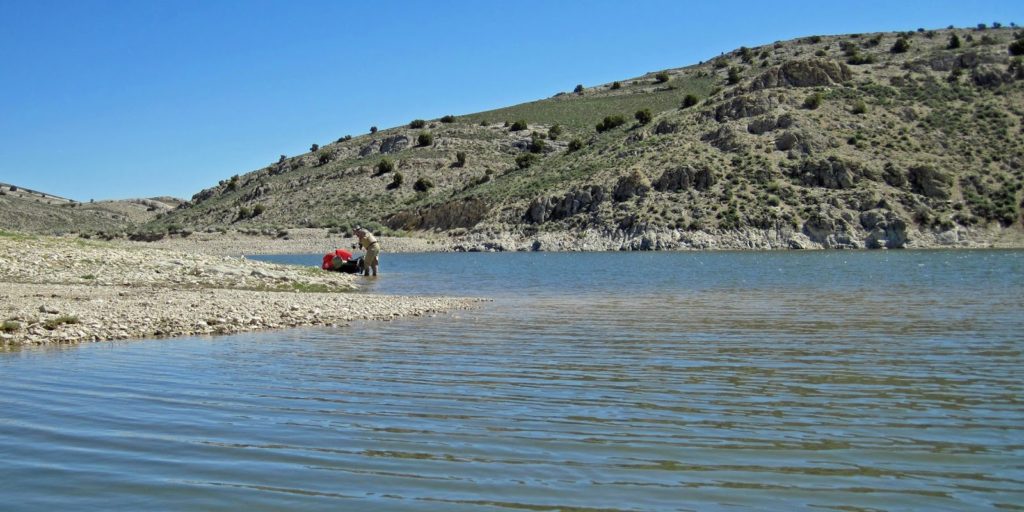
Traveling in the cab of a truck with someone you’ve never met or actually talked with can be a risky proposition. In this case I wasn’t worried for any safety reasons, but what if we turned out to be boring to each other, or even worse obnoxious in a way unapparent in well-manicured written words? I’m sure we were both relieved to find we shared a propensity to tell stories recalled from lives well lived. It made the time pass quickly while driving those Nevada highways.
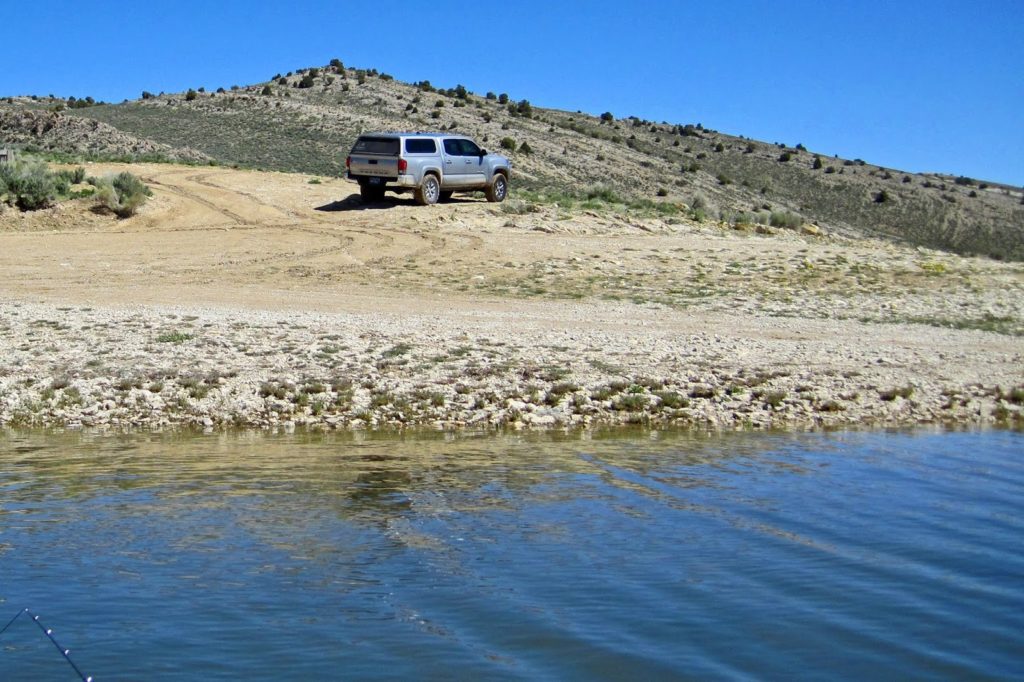
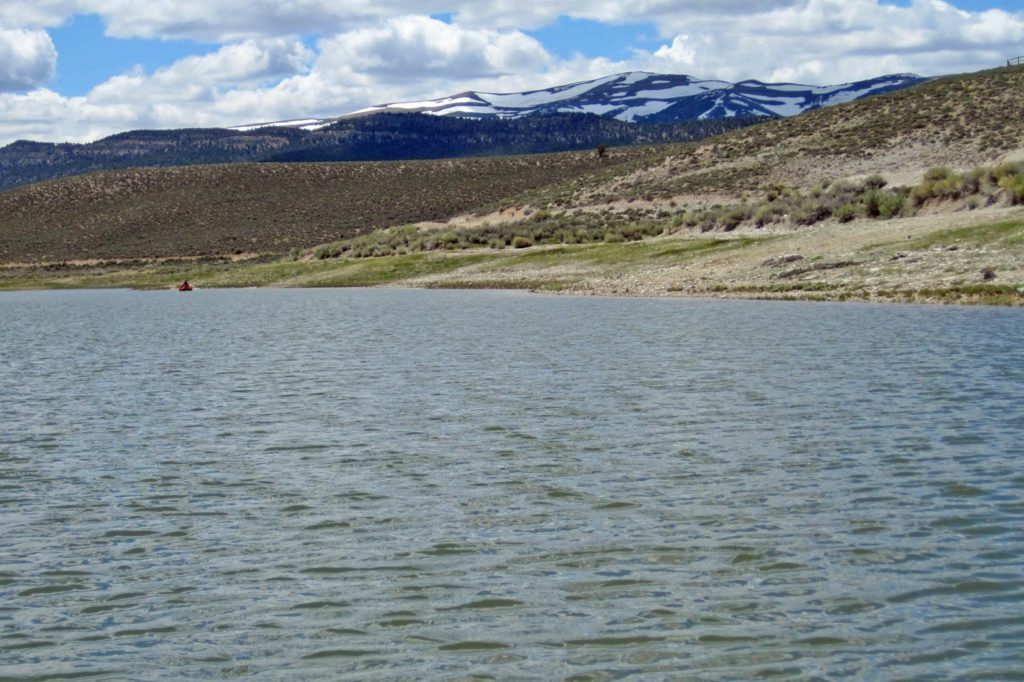
Speaking of which, while driving on US Highway 50 from Ely to Illipah, Chan asked me, “Is this the loneliest road in America?” I smiled. Originally labeled the Lincoln Highway, it was one of the first transcontinental highways in the USA. It ran from New York City’s Times Square to San Francisco’s Lincoln Park, passing through Ely and other Nevada cities along its way. In July 1986, Life Magazine declared the 286-mile stretch from Ely to Fernley, NV to be “The Loneliest Road in America.” I can tell you it wasn’t so lonely traveling with Chan.
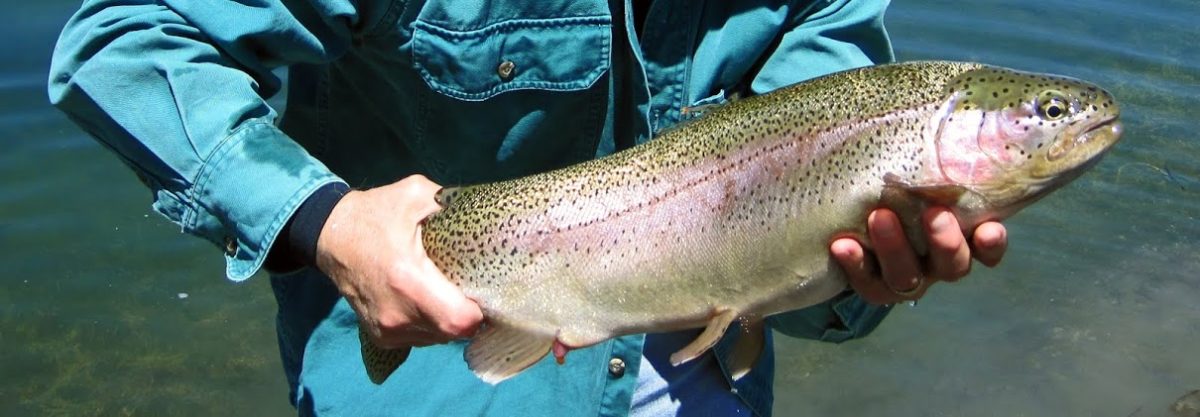
Nice fish- good color and look quite healthy. We camped on Comins years ago, but didn't fish it at the time (back in the mid 70's), as I had no interest in pike.
Alan –
Thanks for reading and posting a comment. The trout were very healthy, and the brown trout was outstanding. I hope to re-visit Comins early this spring… I feel like we're fighting against what will be the 4th Comins' pike-eradication event in my lifetime.
All the best!